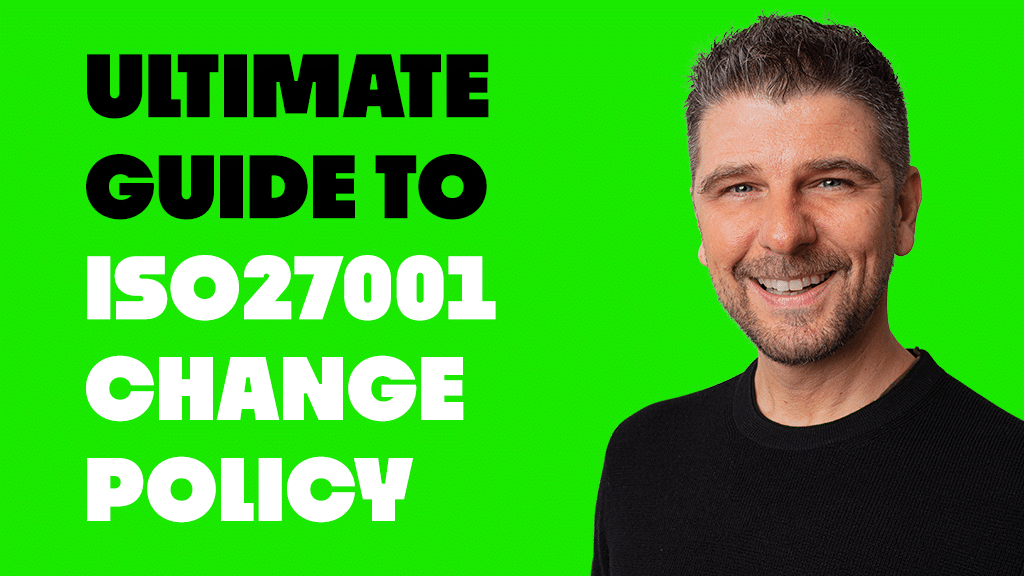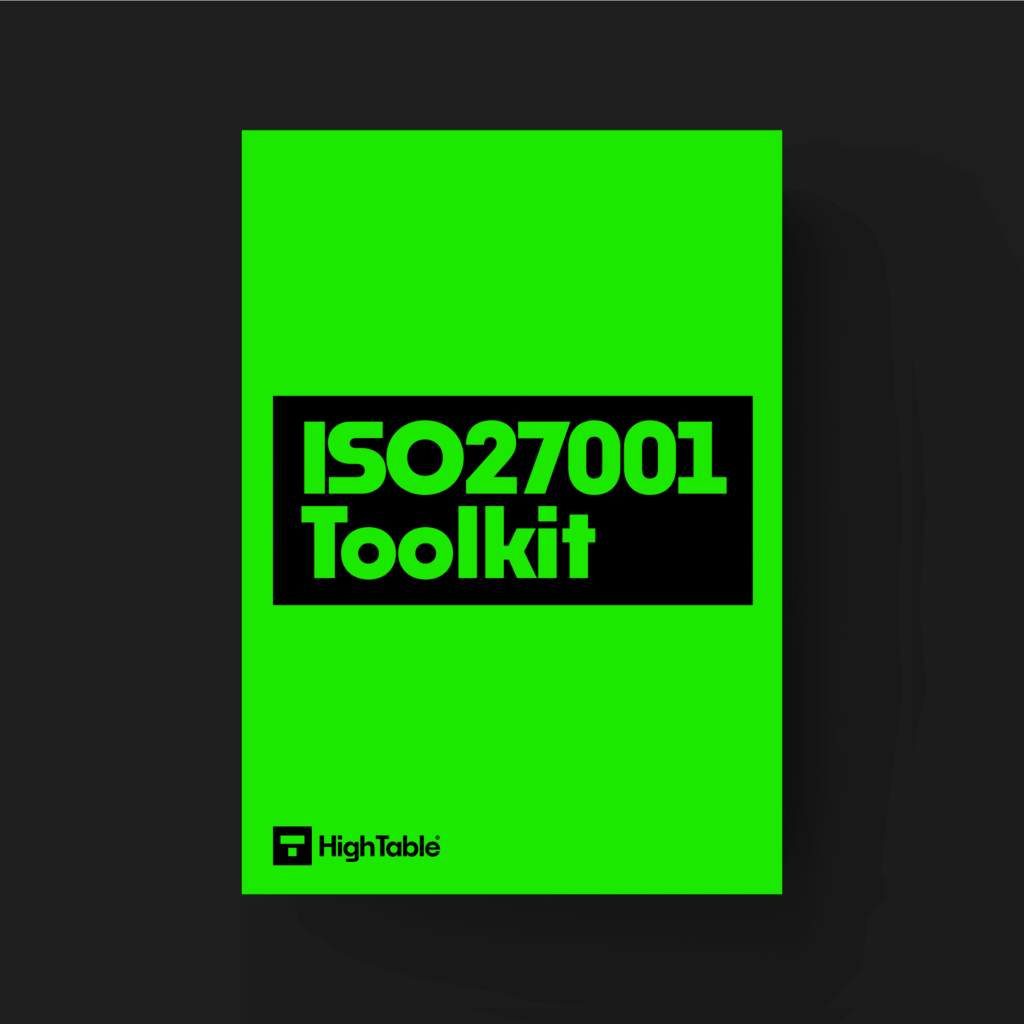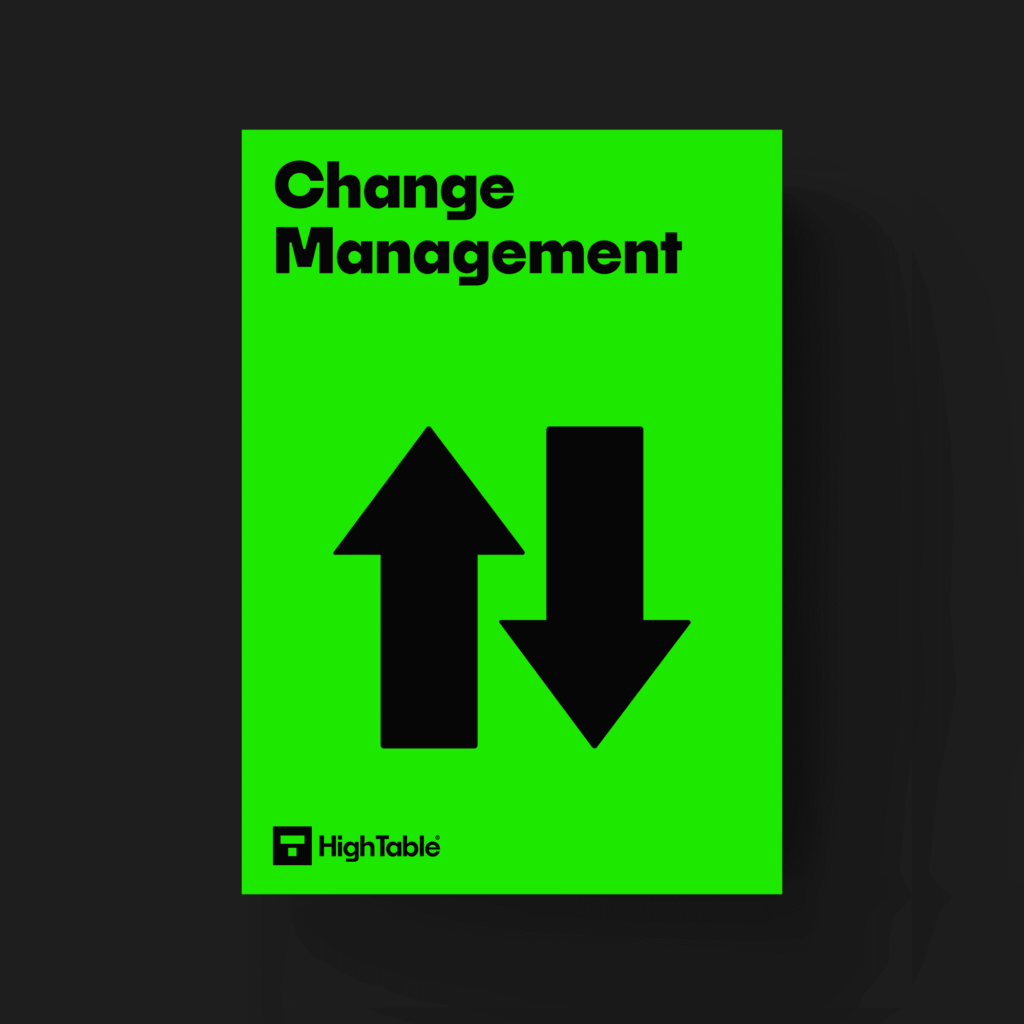 Policy Ultimate Guide" width="1024" height="576" />
Policy Ultimate Guide" width="1024" height="576" />  Policy Ultimate Guide" width="1024" height="576" />
Policy Ultimate Guide" width="1024" height="576" />
In this article we’ll explore the ISO 27001 Change Management Policy and exactly what you need to do to satisfy it to gain ISO 27001 certification.
We’ll explore what change management is, understand why organisations need a Change Management Policy, show you how to implement one, and let you in on a trade secret that’ll save you hours of time and effort, simply by using this change management policy template.
I’m Stuart Barker: founder of High Table, Information Security expert and ISO 27001 Ninja, and this is the ISO 27001 Change Management Policy.
Change management is a structured approach to managing transitions and transformations within organisations. In the context of information security, change management is the process of making changes to a company’s IT systems, with the objective of minimising errors and disruptions.
A Change Management Policy is a set of guidelines organisations employ to manage changes in a controlled and safe way.
ISO 27001 lays out change management as planning, organising, leading, and carrying out organisational changes. A change management policy is a document containing a set of procedures that help businesses manage changes effectively.
A change management policy should adapt to an organisation’s specific needs and should be updated regularly.
A well-written change management policy will outline how to successfully organise and lead a business through a process of transformation.
DO IT YOURSELF ISO 27001
All the templates, tools, support and knowledge you need to do it yourself.

Change is an unavoidable part of any organisation’s journey towards growth. But, when it comes to information security, change can present vulnerabilities and risks if not managed correctly.
When issues occur, businesses are affected negatively, which is why it’s important to implement a robust Change Management policy.
It can be confusing to work out what to include in a change management policy or where to start. An ISO 27001 Policy Template that is pre written and ready to go can save you a lot of heart ache so that is why we have done the heavy lifting with the ISO 27001 Change Management Policy Template.

Creating a comprehensive change management policy is crucial for successful implementation of corporate changes. Different types of changes, such as those aimed at improving performance or complying with regulations, may require specific procedures.
When developing change management guidelines, it’s important to consider the company’s size and setup. Foe example, bigger companies could have more complicated change management processes than smaller ones, which means that more people may need to be involved in the transformation process.
When putting the policy together, it’s important that it is flexible enough to adapt to future company changes. Changes happen – and as a result – different procedures may be required, so it’s important that the policy can accommodate unforeseen circumstances.
If you want to make life easier and save yourself up to 8 hours of work, this pre-populated template will give you a complete, ready to rock ISO 27001 Change Management Policy, with everything you require to meet the ISO 27001 standard – in under 20 minutes. Or, if you like a challenge, you’ll need to consider the following:
If all of this sounds like a lot of effort just to write one ISO 27001 policy, save hours of your time by following this ISO 27001 Change Management Policy template.